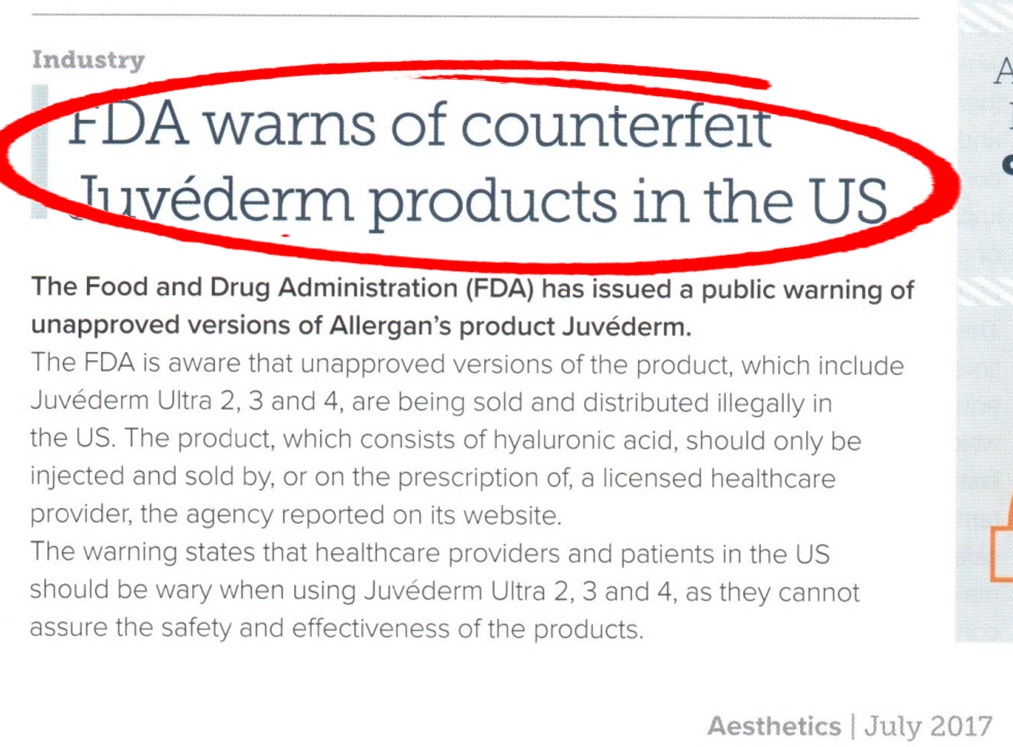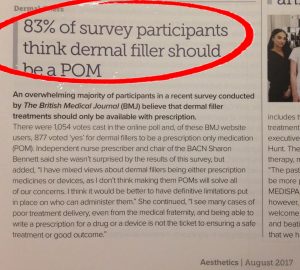Story at-a-glance
- The aesthetic market is unregulated in the UK
- Anybody can administer dermal fillers after a one-day training course
- Dermal fillers without safety testing can be legally used
- Patients are exposed to untrained practitioners
- The Safe Aesthetic Treatment Campaign empowers patients how they can choose a good practitioner
- Download the Declaration and use it!
How to stay safe during facial aesthetic treatments with the Safe Aesthetic Treatments Campaign
Facial aesthetic treatments, such us Dermal Fillers and Botox injections are great and established options for alleviating the signs of ageing and many patients are enjoying the benefits worldwide. Looking more youthful boosts your confidence and makes you feel better. These are generally safe treatments; however, as is the case with all procedures, complications can occur.
The result of the aesthetic procedures and the chance of complications are very much dependent on the administration of these products. It is very difficult for a layperson to determine whether the practitioner of choice is a good and safe option for him or her. I would like to provide some guidance in this regard and give an effective way for you to ensure that your aesthetic treatments are performed by a well-trained and safety-aware practitioner.
The legal environment
Practically anybody can inject dermal fillers anywhere in the UK, and the market for fillers is also not regulated sufficiently. While in the USA only fillers approved by the FDA (Food and Drug Administration) can be used, here in Europe and the UK fillers need only a CE mark – like a ball pen or a toothbrush -, which is very easy and quick to obtain. This is the reason, while there are over 170 different fillers at the European market, while 14 (properly tested and regulated) in the USA. It is a very expensive process to properly evaluate the safety and efficiency of fillers, so FDA approved fillers are more expensive (but safe). Obviously, companies won’t do that if they are not forced to do so, which is the situation in Europe. Furthermore, practitioners who don’t have high ethical standards are happy to use cheap fillers which gives them a financial advantage against those, who stick to the more expensive but safe ones. The quality of fillers which is put into your face is only one thing. There are many other factors which do matter.

What can you do to ensure your maximum safety?
In most countries only medically trained doctors can perform dermal filler and wrinkle injections, but for some incomprehensible reasons in the UK anybody can do it without any real restrictions. So, if the regulators leave you (the patient) exposed to ‘cowboys’ it is you who should protect yourself. It is much easier to be said than done since obviously, you don’t know the nitty-gritty of safe and effective procedures. Let me help you then in this regard by working out the Safe Aesthetic Treatments Campaign
First of all, if I were a patient I wouldn’t go to anyone other than a doctor. That being said, I do know very good nurses and dentists who provide safe and effective facial aesthetic procedures, however, I would never go to a chemist, a hairdresser or a beauty therapist to perform an injectable treatment on me.
Why?
My reasons are simple and it is not about whether they are good or bad injectors. A medical doctor, during the long years of their training, experiences the fragility of life and health, so they know how easily complications can occur and they respect this. A complication is not necessarily a problem in itself and they happen very rarely, but when they do, the practitioner should be able to manage it timely and professionally. I doubt that a medically untrained person can deliver proper complication management which, most of the time, involves prescription drugs. Furthermore, a sound knowledge of anatomy helps to avoid these complications, and again it is taught properly in medical schools only.
Secondly, I would never have my procedure done at home or in a garden shed or in the back of a barbershop. The environment, general hygiene, the availability of emergency medication and equipment is paramount for the safety of these procedures.
The only acceptable environment for such a treatment is a medical office, preferably regulated by authorities such as the Care Quality Commission in the UK.
So, for now, you have a broad idea of where to go and not to go, and here comes the difficult bit, the details that make the difference. Are you able to size up these attributes by visiting the website or even the clinic of the chosen doctor (or nurse or dentist…)? Of course, not!
I have made it very simple for you. I have worked out a ‘Declaration’ as part of the Safe Aesthetic Treatments Campaign, that you can download and print out and give to your practitioner to sign before your treatment. By doing so they declare that they are compliant with the points detailed independently, whether you know and understand what it is about or not. If they are happy to sign it you can be assured that you are at a safe place and in safe hands to have your procedures done. If not, for whatever reason, it is better for both of you if no treatment takes place.
Final note for patients No.1:
I would like to emphasize that these procedures are safe and effective. Complications happen very rarely in well trained and experienced hands while thousands of these procedures are done globally every day. The Safe Aesthetic Treatments Campaign is focused on patient safety so you might have the feeling that these procedures are not safe. That is not the case! I just want to ensure that your treatment is performed by someone who is suitable for it and can ensure your safety and satisfaction on the highest level.
Final note for patients No.2:
It might be quite intimidating for a doctor to be presented with such a document and questioned his or her competency, so handle this issue respectfully. A good practitioner who invests their time and money into their education can tick and accept the points of the declaration easily since it is their common practice. My aim with the ‘Safe Aesthetic Treatments Campaign‘ is not intimidating doctors, my colleagues, but educating and empowering patients about their safety. Safe procedures, happy patients, thriving aesthetic practice!
Final note for practitioners:
The points of the declaration should be a common practice for us, cosmetic practitioners. Please handle the patients turning up with the declaration with understanding and don’t feel offended. It is our mutual responsibility to make the field of facial aesthetics a safe and value generating field. Our patients should be ensured that they are in good hands and they can really enjoy the benefits of our procedures.
Dermatologist
Cosmetic Doctor
Your opinion/feedback matters
If you have any experience, feedback or opinion regarding the Safe Aesthetic Treatments Campaign or its execution, please share it with me. If it is a valid point which makes the campaign more effective, I am going to amend it accordingly.
Thank you!


